HAVING RHEUMATOID ARTHRITIS (RA) MAY DRASTICALLY CHANGE A PERSON’S LIFE
Depending on the intensity of pain, stiffness and the extent of joint damage, simple daily tasks might become difficult or take longer to perform. Making small and simple changes in daily tasks can help a person live well, even with RA.
These include :

EATING WELL AND MAKING THE RIGHT FOOD CHOICES
Making the right food choices with RA may help control the condition.
Maintaining a healthy weight is essential in RA management, as excess weight puts more pressure on joints. Fruits, vegetables, whole grains and healthy fats (in the form of fatty fish, seeds or nuts) are recommended for people suffering from RA.
Here are some foods that help relieve the swelling and other symptoms of RA.

Fatty fish and nuts
Rich in omega -3 fatty acids, which may help reduce swelling

Fruits and veggies
Rich in antioxidants, which may help reduce swelling

Whole grains
High in fibre and rich in nutrients to help maintain a healthy weight

Peas and beans
Great source of protein to improve muscle health

Olive oil
May help relieve swelling and pain

Probiotics
Dairy products with good bacteria may help reduce swelling and disease progression
LIFESTYLE CHANGES
Self-Care
Self-care in RA involves taking responsibility for one's well-being with support from family and friends. This includes everyday activities that help to keep fit, maintain overall health, and manage symptoms of RA. Self-care can help one live longer, have a better quality of life, and become more active and independent.
Being physically active
With joint pain and stiffness, a person with RA may not want to move around, especially in the morning. But staying active helps ease the symptoms of RA and prevents long-term issues.
Below are a few simple exercises for RA that one can follow:
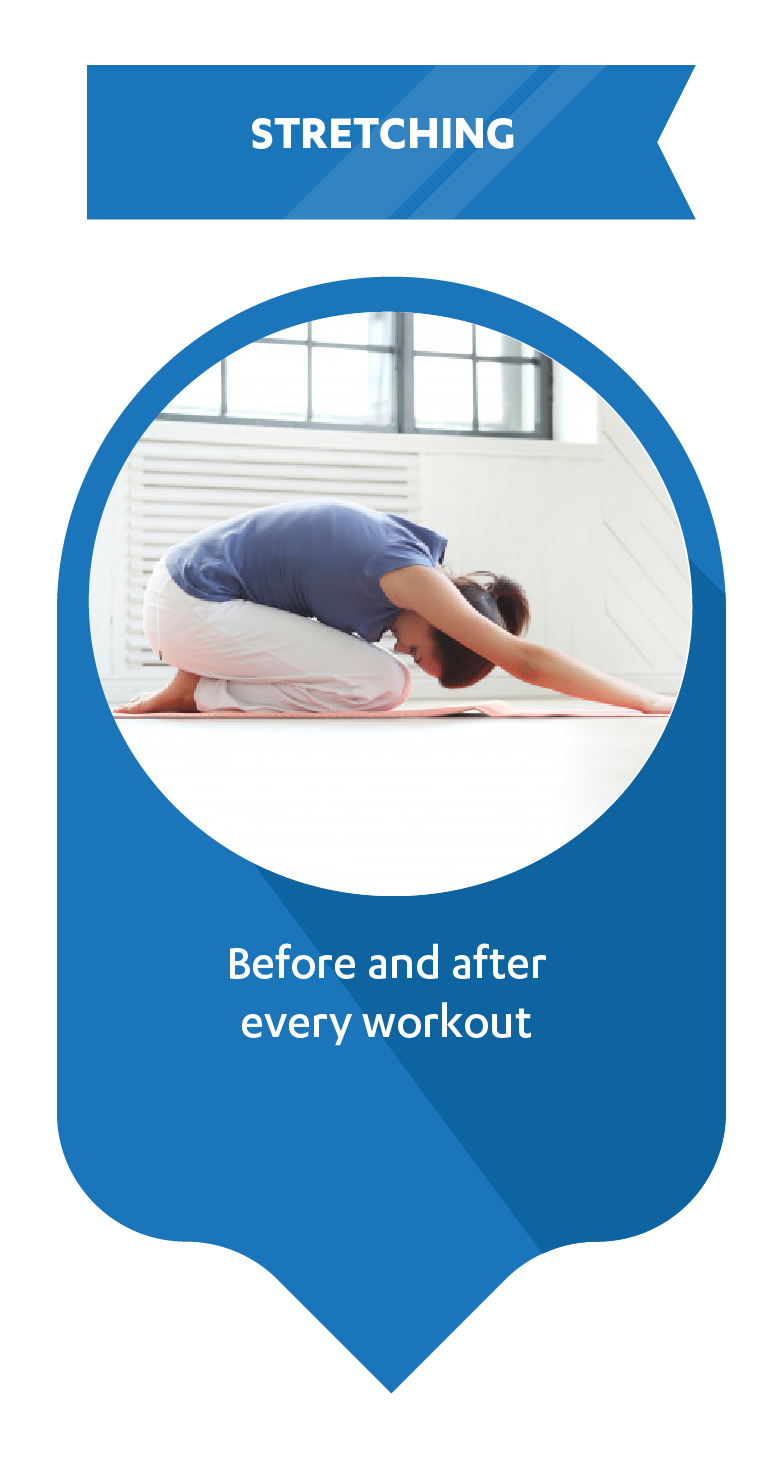
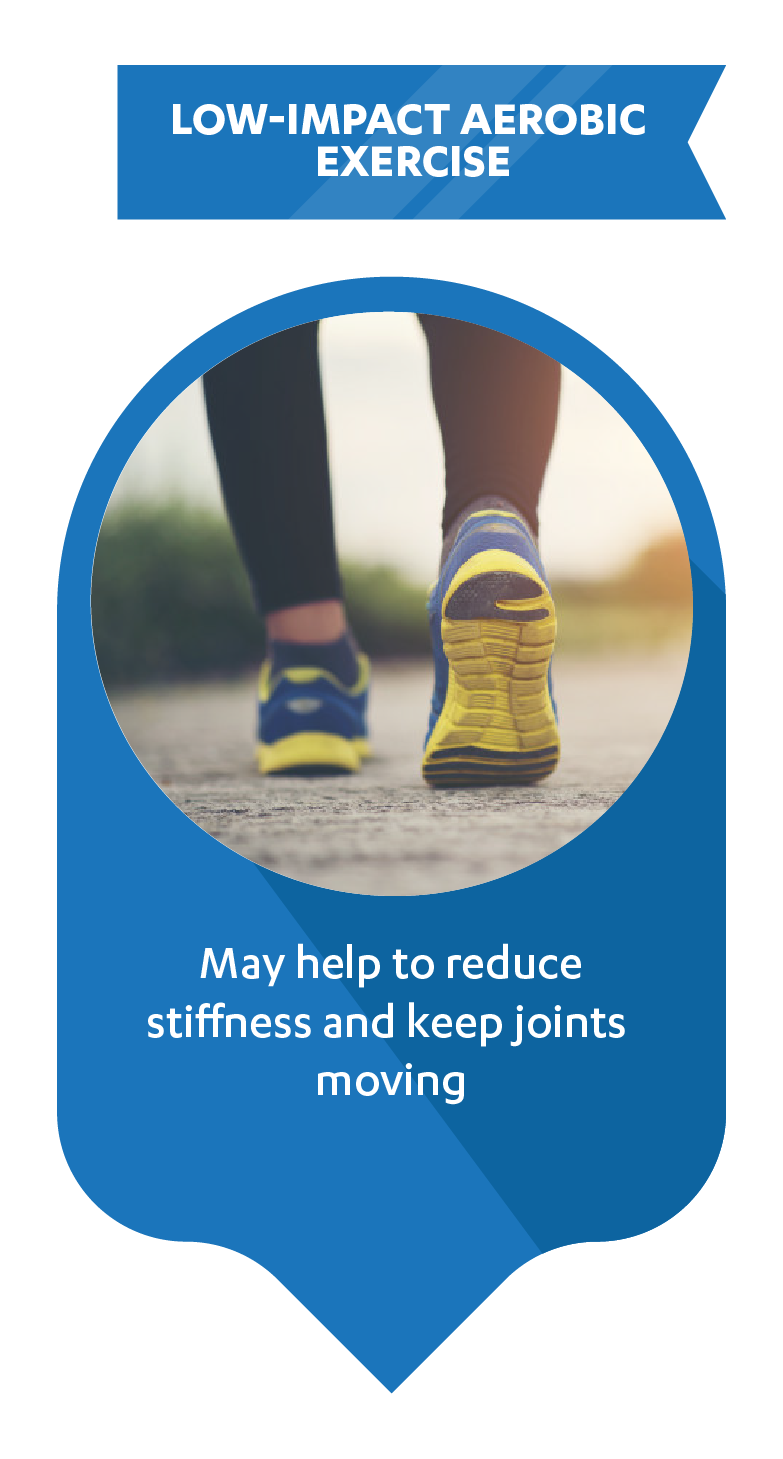

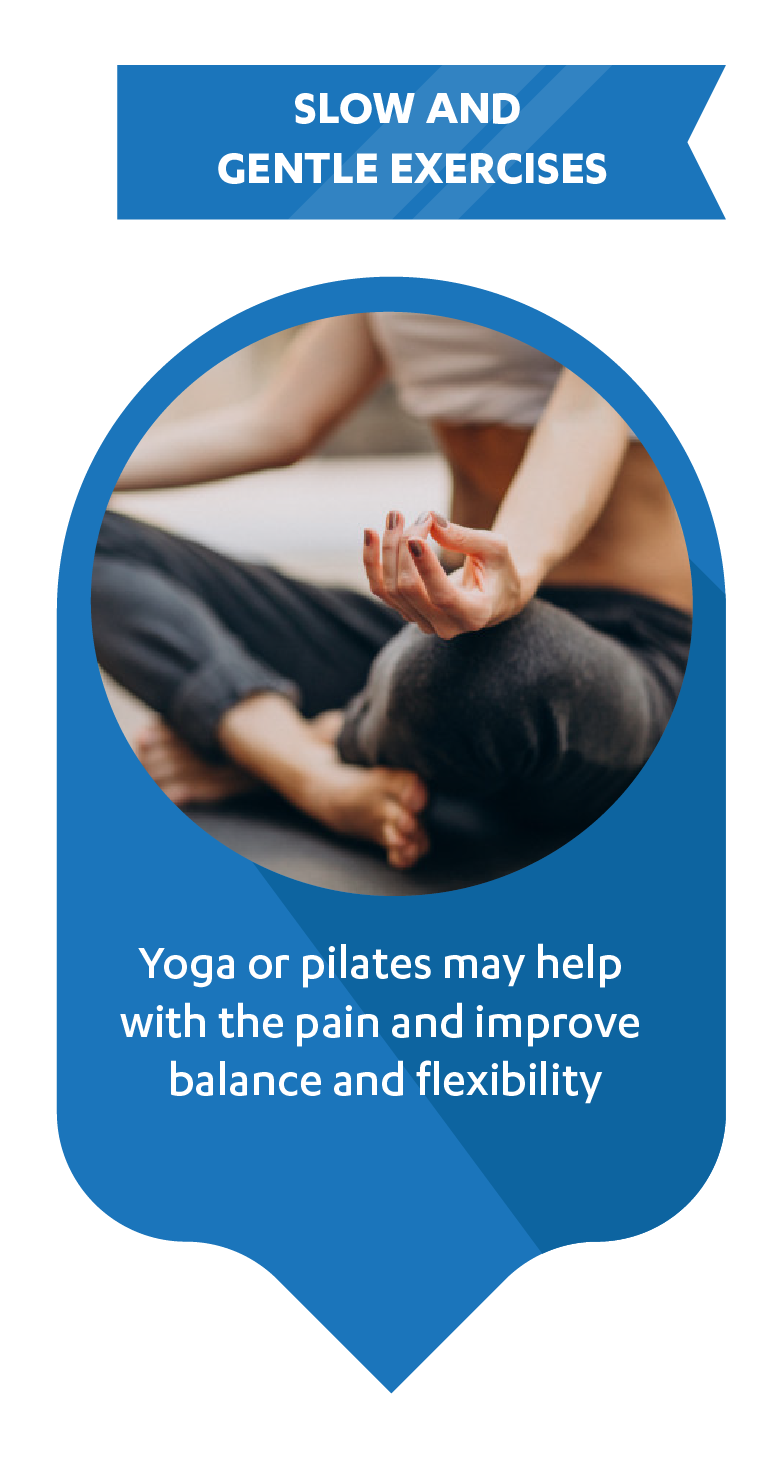
Exercising while having a flare-up
While staying physically active can have plenty of benefits, it is important for RA patients to listen to their body. Exercise injuries could result in RA flare-ups.
When experiencing a flare-up, it is recommended that RA patients exercise in short bursts such as three 10-minute workout session over a 30-minute continuous session.
Maintaining a good exercise routine
It is essential to follow a regular exercise routine.
Here are some tips for maintaining a regular exercise routine:
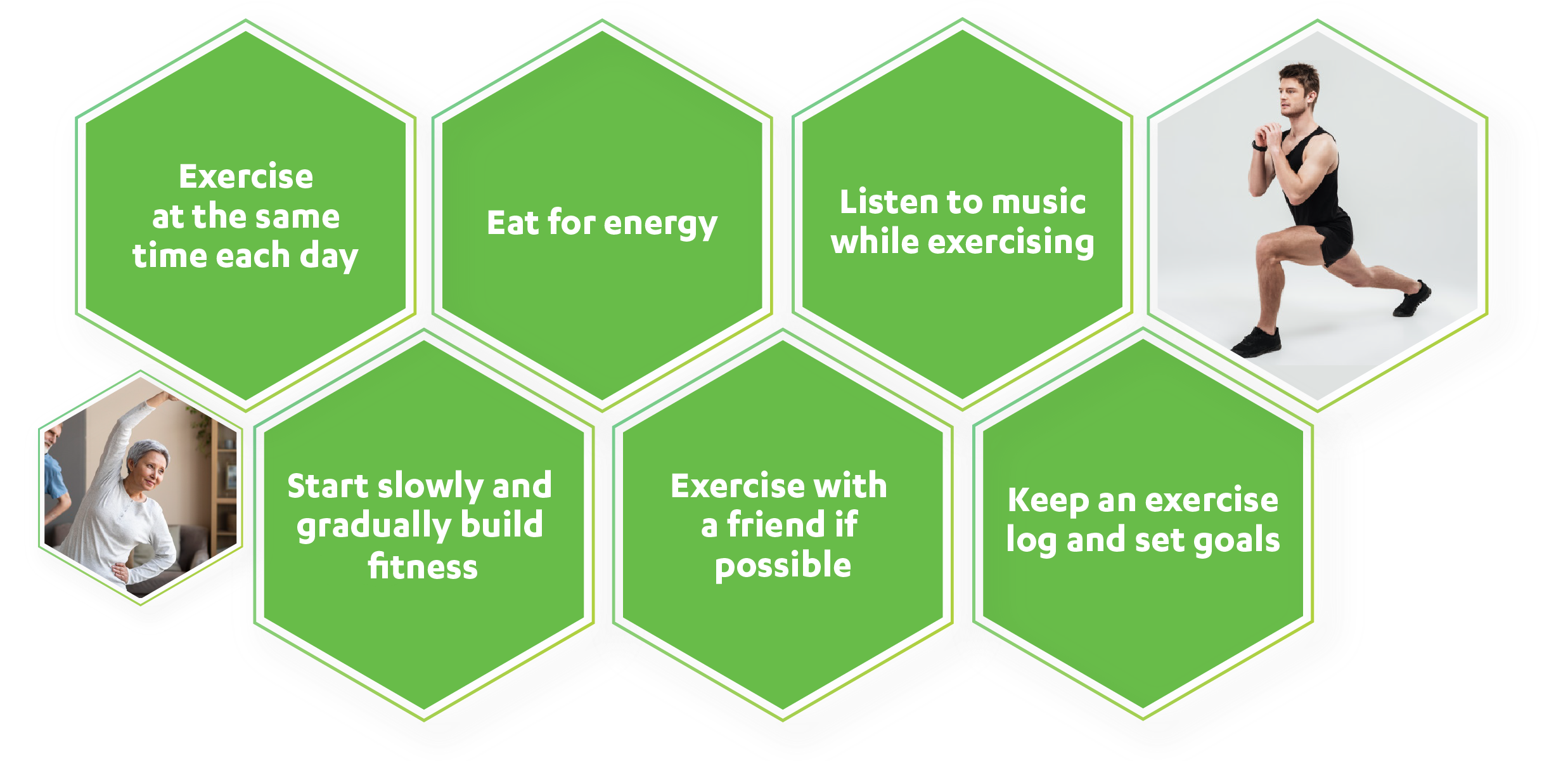
SMART WORKING AT HOME AND OFFICE
With proper planning, it is possible to not let RA limit one’s daily activities.
Some simple hacks can make working with RA easier. Here are some examples:
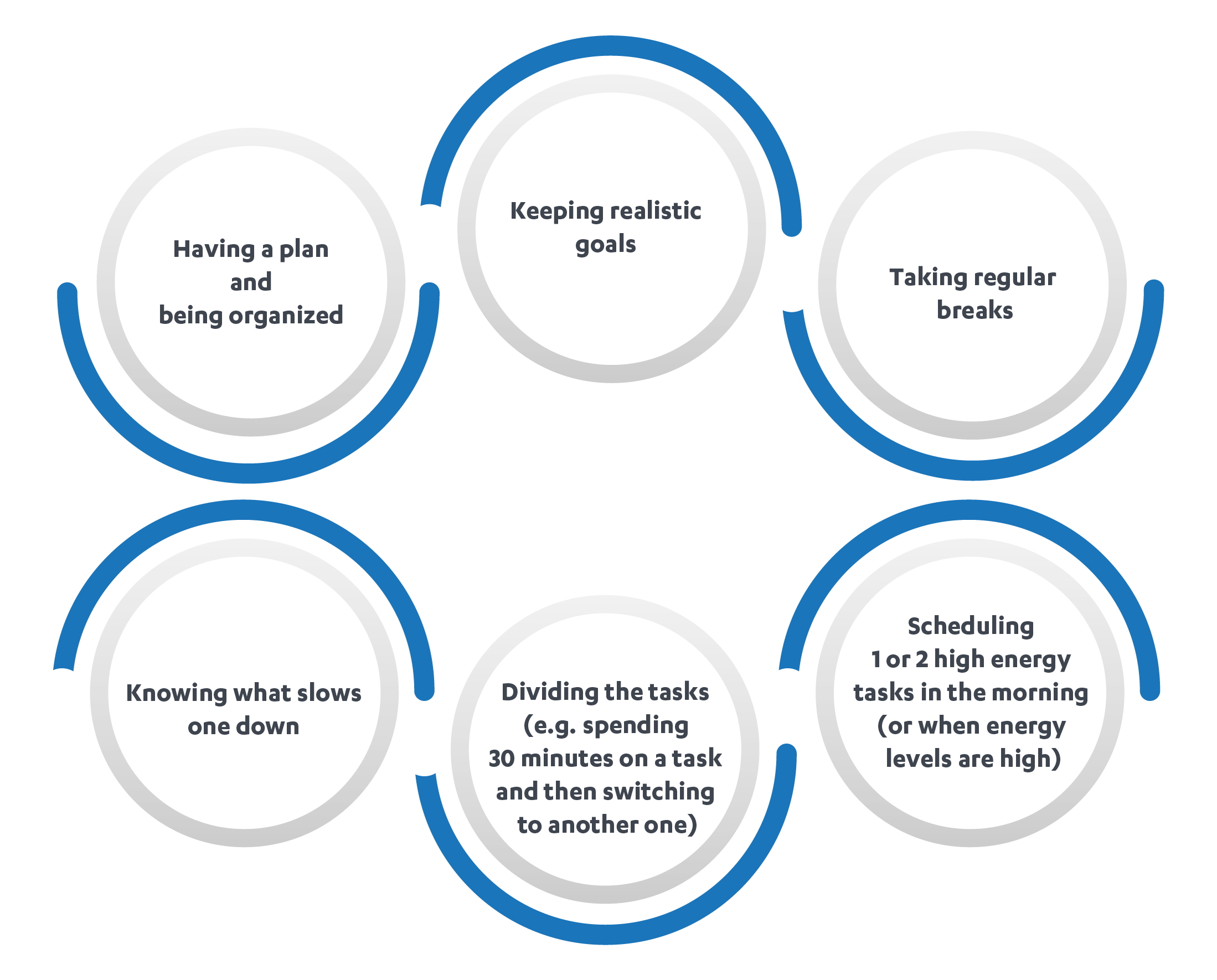
Having RA does not hinder a successful career and work life.
Here are some ways to handle RA effectively and be an active contributor at work and in the office.
SETTING UP A COMFORTABLE WORKPLACE
A comfortable workspace can help one work at a good pace and increase productivity. Here are some tips:
- The chair should support the lower back preferably with armrests.
- Choose a swivel chair with wheels for easy movement.
- Ensure that the seat isn’t too deep.
- Sit in a manner where the feet are flat on the ground with a gap of at least an inch between the back of the knees.
- Keep the keyboard and mouse at the same level.
- Adjust the monitor height so that the top of the screen is at, or slightly below eye level
- Make sure that the wrists, forearms, and elbows are on the same plane.
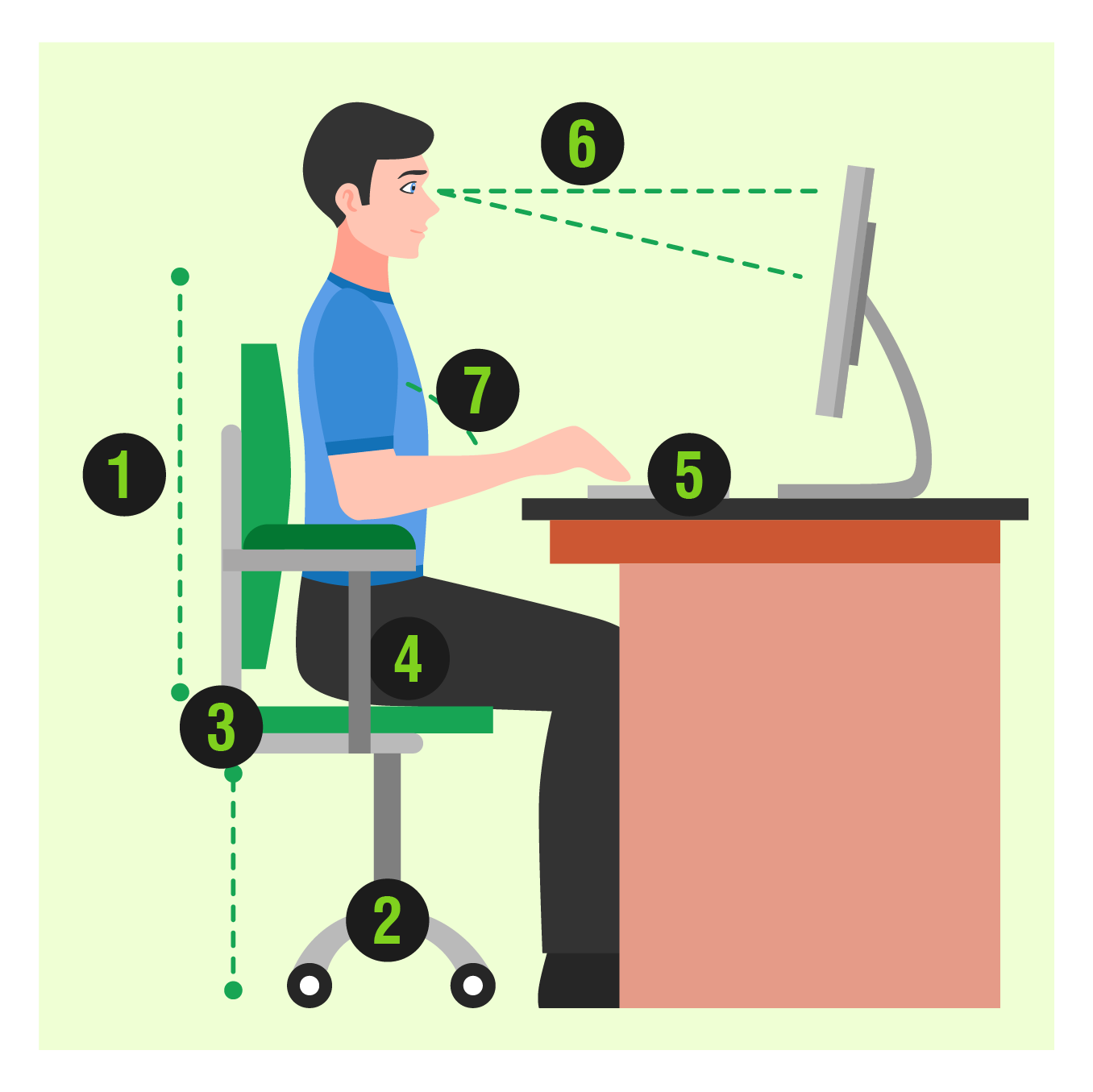
WORKING PATTERN AND PROPER SCHEDULING OF WORK
Along with a good desk set-up, a person with RA will need support from their employer and flexible work arrangements. Informing the employer about RA can improve the employees’ experience at work. For instance, whenever there is a RA flare-up, the below suggestions may help:

Standing up and walking around

A standing desk to alternate between sitting and standing

Nearby parking space

Flexible work hours

Remote working

Flexible dress code (like having the choice to wear comfortable footwear)
GOOD SLEEPING HABITS
RA can cause a person to toss and turn at night. While it is hard to tell the number of RA patients who experience sleep issues, more than 80% report fatigue due to disturbed sleep. Let’s have a look at some tips for better sleep.

Establish a regular sleep cycle

Go to sleep and wake up at the same time each day

Avoid alcohol and caffeinated drinks, especially towards the end of the day

Exercise during the day time

Meditate regularly

Avoid screen time, eating or working just before bedtime
DO’S AND DON’TS WHILE TRAVELLING WITH RHEUMATOID ARTHRITIS
One can easily travel, go for trips and do things that are enjoyable even with RA.
A little more preparation is all that is needed!

Do some phone or online research about the place before the trip

In the case of morning stiffness, plan outings for later part of the day

Try to get an aisle seat on the plane

Use the forearm instead of the wrist or fingers to carry bags

Refrain from consuming alcohol

Choose a room on the ground floor or ensure the accommodation has a lift/elevator

Avoid crowds

Pack extra medicines and split them into different bags for safe measure

Get enough rest after a trip
PREGNANCY AND RHEUMATOID ARTHRITIS
Pregnancy is indeed an important milestone in a woman’s life. But with RA, a woman may face some concerns in this phase.
Many women with RA have fewer symptoms during the pregnancy; however, some may experience a flare during this period. In such cases:
Seek immediate
medical help
Avoid taking
medicines without
asking the doctor
Inform the
rheumatologist about
the pregnancy
Inform the
gynaecologist about
the RA medicines
that are to
be taken
Use hot and cold
packs for
relieving the pain
Get blood pressure
checked regularly
Here are some questions that a pregnant woman undergoing RA treatment can ask the doctor:
- Will RA or its medications affect the baby’s development?
- Will the symptoms worsen during pregnancy?
- Will arthritis affect childbirth?
- Can a pregnant woman take painkillers to manage RA pain during pregnancy? If yes, which ones?
- Can a pregnant woman breastfeed while undergoing RA treatment?




